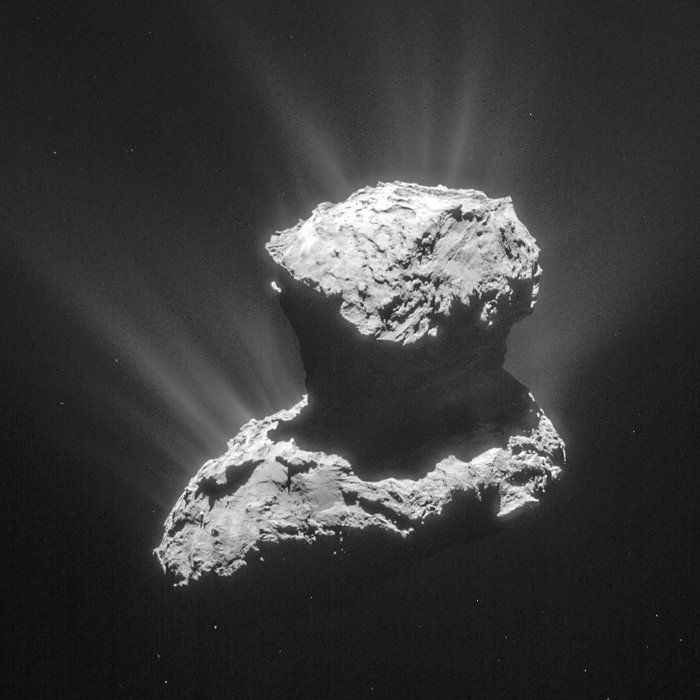New Discovery On Rosetta Mission Comet Solves Its Mysterious Nature

KEY POINTS
- Scientists discovered the presence of ammonium salts on Comet 67P
- The discovery was made through an experiment that simulated the comet's conditions
- The ammonium salts on Comet 67P were hiding nitrogen particles
A team of scientists discovered traces of ammonium salt on the comet known as Comet 67P/Churyumov-Gerasimenko. According to the scientists, the discovery of this substance has helped uncover one of the mysteries surrounding the comet’s features.
Comet 67P is a Jupiter-family comet that came from the Kuiper belt. It has been the focus of the European Space Agency’s Rosetta space probe mission since its launch in 2004.
Many scientists believe that the comet went through the same formation process as the other objects in the Solar System, such as planets and the Sun. This process was triggered by the condensation of a gas cloud known as a solar nebula, Space.com reported.
Theoretically, all objects that were formed through this process should have the same nitrogen-to-carbon ration. However, observations on Comet 67P revealed that its ratio is off due to its low nitrogen levels.
To solve the mystery of the comet’s missing nitrogen, a team of scientists conducted an experiment that involved simulating comet surface compositions. The experiment was conducted by exposing fine particles of water ice containing dust grains to comet-like conditions such as low temperature and a vacuum environment.
The experiment results in the ice’s sublimation, which left behind a surface made of porous dust just like in comets. According to the scientists, the reaction of the substances was most likely triggered by the presence of ammonium salts, which have been mixed with the dust grains.
The scientists explained that the presence of the salt would also increase the nitrogen content of comets. This means Comet 67P did not have missing nitrogen. Instead, most of its nitrogen content was hidden by the ammonium salts.
“We cannot quantify exactly the amount of ammonium salt on the comet, so we can say there is more nitrogen in this comet than previously thought, but we don't know exactly how much,” post-doctoral researcher Olivier Poch of the Institut de Planétologie et d'Astrophysique de Grenoble in France, who led the study, said in a statement.
The results of the scientists’ experiments and their new findings on Comet 67P were presented in a study published in the journal Science.
© Copyright IBTimes 2025. All rights reserved.





















